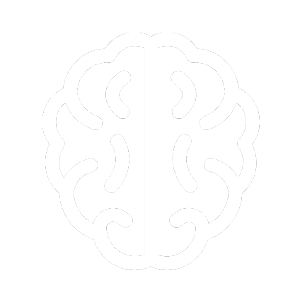To effectively implement social emotional learning, and teach the essential skills of emotional intelligence, Six Seconds has identified best practices in three key “strands”:
- Everyone in the school is developing their own EQ skills
- EQ is integrated into the classrooms to enhance academic learning
- The whole school uses EQ to build a thriving learning community
There are three benchmarks for each area, and a rubric to assess implementation.
Strand one:
EQ Development
1. All people in the school community learn & practice EQ.
2. SEL training for educators.
3. Measure EQ to support individual growth.
Strand two: Extend EQ into the Classroom
4. EQ data supports teachers for effective practice.
5. EQ extended to support academic learning.
6. EQ used for positive classroom communities
Strand three: Integrate EQ into the School
7. Annual SEL planning.
8. EQ visible in school.
9. Use school climate assessment to guide implementation.
Six Seconds has found that in order to effectively support students & families to practice emotional intelligence, teachers need the training and support to do so themselves. These standards begin by equipping and empowering teachers-as-changemakers to measurably improve education by infusing emotional intelligence into their classrooms and schools. The next stages are to integrate these skills into the classroom and throughout the schools.
Implementation
Stage 1 is usually a pilot group, with implementation across around 25% of the school.
Stage 2 is usually an expansion phase, with implementation to around 50% of the school.
Stage3 is usually an integration phase, with implementation to >90% of the school.
Rubric for Social Emotional Learning Implementation
These three “strands” are articulated below at three levels of implementation:
|
9 Benchmarks |
Stage 1 |
Stage 2 |
Stage 3 |
|
EQ Development 1. learn & practice EQ 2. SEL training 3. Measure EQ |
EQ Lessons for students in selected classes, for at least 8-12 weeks. EQ training and professional development for > 25% of teachers. EQ assessments and informal assessment used in some teacher training or professional development activities and selectively with students. |
Consistent EQ activities for >50% stakeholders (students, teachers, parents), at least 20 weeks a year. All SEL (or equivalent) teachers sufficiently trained & certified to facilitate SEL. > 50% Utilize EQ assessments to help guide students, teachers on their development. |
Systematic year-long plan (scope/sequence) of EQ for SEL/Self-Science for all students, teachers, parents Formal SEL training & Certification for >80% of teachers Students, teachers, parents access EQ assessment in formal planning, goal-setting, learning processes, including staff selection & evaluation |
|
Extend EQ into the Classroom 4. EQ data 5. EQ supports academic learning 6. EQ classrooms |
> 25% teachers supported with individual student EQ data to assist them with challenges. > 25% teachers introduced to ways EQ can be extended to support academic learning. >25% teachers trained in EQ methods for classroom management & community building. |
> 50% of teachers use EQ data to help them understand their class and how to best teach them. Evidence of EQ integrated to support academic learning. > 50% teachers actively apply structures & process for building positive classroom community. |
Classroom EQ data for coaching/support of > 80% teachers, leading to a plan for classroom integration Consistent, daily evidence of EQ supporting academic learning in > 80% classroom. Consistent, daily use of structures & processes for building positive classroom community in >80% classrooms. |
|
Integrate EQ into the School 7. SEL planning 8. EQ everywhere 9. School climate assessment |
Process for setting annual goals for SEL. Leaders advocate for importance of SEL as a foundation for school’s success. Formal or informal methods for assessing school climate and SEL implementation at least on annual basis. |
Annual leadership meeting focused on SEL plan & with specific commitments Make SEL visible throughout the school including policies, procedures, plant. Informal assessments plus annual use of school climate and other assessments to track SEL implementation. |
Strategic plan with specific goals, designated leaders & plans for SEL to include annual review and report. Mission includes SEL as a central pillar, visible throughout the school including policies, procedures & plant. Systematic use of formal and informal assessment to guide SEL implementation. |
How to implement the benchmarks for social emotional learning?
Examples of Implementing the Benchmarks
To assist educators in envisioning ways these benchmarks can be implemented, here are a selection of possible strategies.
EQ Development
1. All people learn & practice EQ
- Ongoing coaching or peer coaching for faculty and staff
- Regularly scheduled EQ workshops for teachers to understand themselves and each other and practice their own EQ skills for personal development.
- Experienced, emotionally intelligent adults participating & facilitating weekly Self-Science/SEL classes – where adults are modeling and honestly engaging.
- Training on EQ skills, norms, and expectations specifically for partners, volunteers, subcontractors, bus drivers, maintenance staff, security personnel, and other adults who are part of the school community.
- Regularly scheduled “Parent EQ camp” events with a series of workshops/lessons over time.
- Monthly EQ newsletter for parents & teachers highlighting a key concept or monthly theme for EQ focus.
2. SEL training for educators
- Monthly 2-hour “EQ Lab” sessions led by SEL team utilizing free content from Six Seconds, such as POP-UP Festival activities or licensed eLearning
- EQAC-E virtual/online certification for SEL leaders to administer assessments and support teachers with assessment data
- EQ Educator Certification for all teachers, counselors, and others to develop own EQ and how to integrate into their practice.
- EQ Practitioner Certification for educators to have a deep understanding of the practices.
3. Measure EQ to support individual growth
- SEI-YV and/or pYV used annually for students in goal setting and guiding instruction
- SEI used annually for all staff for their goal setting & professional development
- SEI Profiles used in parent workshops
Extend EQ into the Classroom
4. EQ data supports teachers.
- Students take SEI-YV for full SEI-YV report or Brain Profiles reports for teacher, counselor, administrator use
- Classroom “Dashboard” reports and a 1-1 coaching session for each teacher looking at their EQ skills in relation to their classroom; follow-up coaching sessions to support them to make and follow plans to best support their classroom’s EQ.
- TVS for teaching team / level team to understand how they can best work together.
5. EQ extended to support academic learning.
- Classroom observations and coaching focused on use of EQ skills, vocabulary, processes in academic lessons
- Informal mechanisms for evaluating group process such as a reflection question to the class after groupwork is completed about “what went well, what could be better next time?”
- Group work assignments specifically state which EQ skills are being used / developed / assessed
- Use of “Fusion Questions” in class discussion (blending cognitive and emotional thinking, such as, “If you where the character in the book, what decision would you make, and how would that feel?”
- Six Seconds’ Learning Philosophy principles are instrumental in lesson planning
- Lessons use Six Seconds’ lesson template, incorporating Engage/Activate/Reflect (EAR) framework
- Deliberate use of current neuroscience findings, eg mini-breaks for active movement.
- SEL lessons use Six Seconds’ lesson format template, highlighting EQ Competencies/Talents and Link to Academic Standards (eg. Common Core)
6. EQ used for positive classroom communities
- Regular “check-ins” about emotions, especially after transitions (eg after lunch)
- Class meeting/circle time used for building safety, listening, group development
- Growth Mindset informs culture.
- Mindfulness practices.
- Social problem-solving.
- EQ process used for decision-making
- EQ basis for classroom management / behavior management.
- Restorative justice practices.
- Support of and honoring of diversity, inclusion, embracing of differences and respect for people of all orientations and backgrounds so all people feel welcome for who they are.
Integrate EQ into the School
7. Annual SEL planning
- SEL Professional Learning Community including teachers, parents, administrators, and even students, meeting regularly to review and plan in advance to promote adult and student competencies and success.
- Director of SEL (or equivalent) empowered and supported to lead EQ implementation in partnership with school administration.
- Ongoing, regular administrative meeting to review EQ progress, including participation from senior leadership.
- Specific budget/funding for EQ / SEL.
- Board committee and/or Parent Association committee dedicated to supporting administration in building/maintaining positive climate.
8. EQ visible in school.
- Development and annual review of policies to support an “EQ community” including Communication Policy, Conflict Resolution / Problem-Solving Policy, Decision-making process/criteria.
- Intentionally bring EQ into every meeting by starting with a check-in or brief EQ exercise.
- Teachers-as-SEL-researchers finding and sharing best practices through writing, speaking, blog posts, education events.
- Annual EQ retreat for board to experience their own EQ development, review current data, and collaborate on how they can best support the school climate.
- Evidence of EQ visible throughout the school facilities through posters, signs, materials created by students & teachers to reinforce the skills and vocabulary.
- Wellness initiatives to support teacher self-care, such as special breakfasts, meditation groups, exercise activities, and Self-Science classes for teachers to feel connected and supported as people.
- In admissions process for private school, use SEI-pYV assessment within parent interviews; conduct “Self-Science” exercise for parent-applicants to understand the core importance of SEL.
- Job descriptions state the importance of emotional intelligence.
9. Use school climate assessment to guide implementation.
- Regularly measure school climate and use this data as a focus for ongoing growth, meetings w admin, faculty, parents, students to review & plan – then re-measure. After each assessment, the administration meets to review the results with a facilitator, and then meets with all faculty/staff to review the results and set goals. The administration and faculty hold a meeting with parents, and optionally others with students.
- Aggregate student & adult EQ data into an annual synthesis to help prioritize when making the SEL plans.
Published Sept 1, 2016. Last updated: Jan 16, 2017
For citations: Freedman, J., Jensen, A. L., Stillman, S. B., & McCown, K. (2016). Benchmarks for an EQ school fully implementing SEL. Retrieved from www.6seconds.org/education/benchmarks
EQ solutions for social emotional learning
Assessments for evidence-based SEL
Professional development to grow your EQ expertise
Curriculum and learning resources for K-adult






